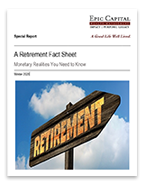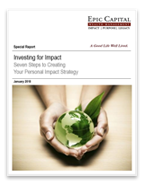Signs of a Washout?
Mar 13, 2020
The S&P 500 Index’s historic washout continued yesterday, culminating in nearly a 10% loss for the day, and leaving the benchmark index officially in bear market territory, just 16 trading days after setting a record high on February 19. In addition, the S&P 500 has now moved more than 4% each day this week, leaving investors and professionals alike wondering when this volatility could end. While nobody knows for sure, one thing we always look for at market bottoms are signs of extremes, both from a sentiment and price perspective.
From an anecdotal sentiment perspective, certainly fears of COVID-19 have reached the masses, with travel plans canceled and announcements of major events called off coming nearly every hour. However, investor survey data shows a similar story with the American Association of Individual Investors (AAII) Investor Sentiment Survey showing the highest percentage of bears since April 2013. In addition, the National Association of Active Investment Managers (NAAIM) Exposure Index, which represents the average exposure to US equity markets by the surveyed investment managers, reached its lowest level since September 2015. Following each of those instances, the S&P 500 rallied more than 13% over the next year.
Another way of gauging sentiment can be from the internals of the market. While the S&P 500 is now well below its 200-day moving average, that doesn’t mean each stock in the index has moved below its respective 200-day moving average. In fact, regardless of the broad market’s washout trend, when less than 20% of the individual components of the index are trading below their 200-day moving averages, it is considered an extreme. As shown in the LPL Chart of the Day, Thursday’s sell-off left less 6% of the S&P 500 there, a number last seen in March 2009. “These are truly frightening times,” explained LPL Financial Senior Market Strategist Ryan Detrick. “However, it is important to remember that the signs of panic we are seeing are typically found at or near major market lows.”
Tags: charlotte NC, Current Events, Investing
More Insights
You’re beginning to accumulate substantial wealth, but you worry about protecting it from future potential creditors. Whether your concern is for your personal assets or your business, various tools exist to keep your property safe from tax collectors, accident victims, health-care providers, credit card issuers, business creditors, and creditors of others. To insulate your property … Continue reading “Estate Planning – Protecting Your Assets”
You know how important it is to plan for your retirement, but where do you begin? One of your first steps should be to estimate how much income you’ll need to fund your retirement. That’s not as easy as it sounds, because retirement planning is not an exact science. Your specific needs depend on your … Continue reading “Estimating Your Retirement Income Needs”
As June begins, markets continue to navigate a complex landscape shaped by trade policy shifts, an uncertain economic and earnings outlook, and bond market headwinds. Several key developments in recent weeks may have implications for markets:
April showers came a month early as stocks fell in March. Tariffs were the primary cause of the market jitters, although that uncertainty became too much for markets to shrug off once economic data started to weaken.
A successful investor maximizes gain and minimizes loss. Though there can be no guarantee that any investment strategy will be successful and all investing involves risk, including the possible loss of principal, here are six basic principles that may help you invest more successfully.
Services
Epic Capital provides the following comprehensive financial planning and investment management services: Learn More >



 Top of Page
Top of Page











